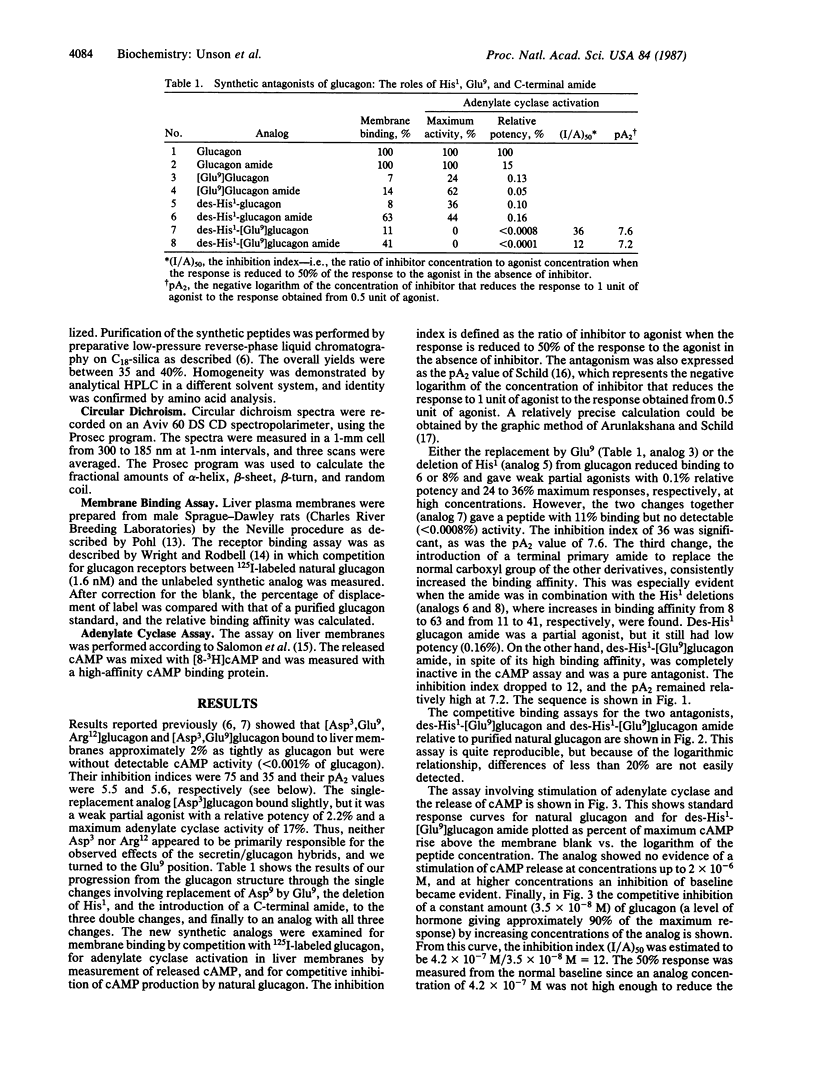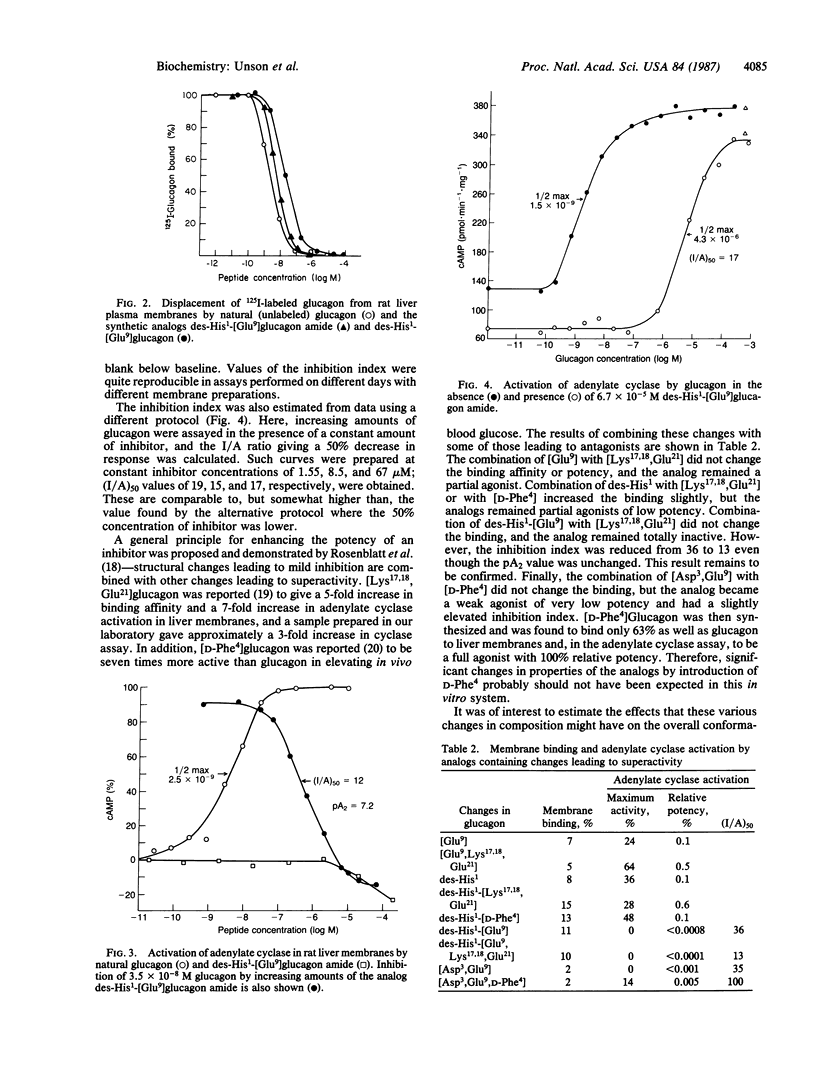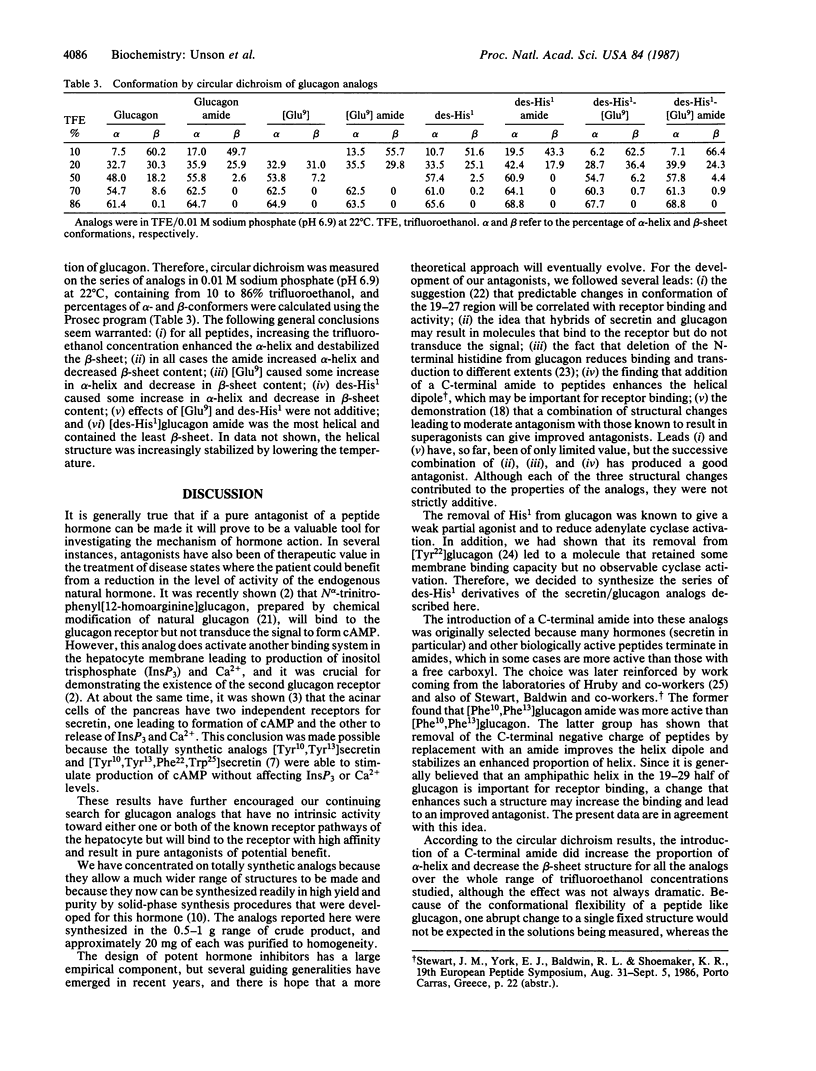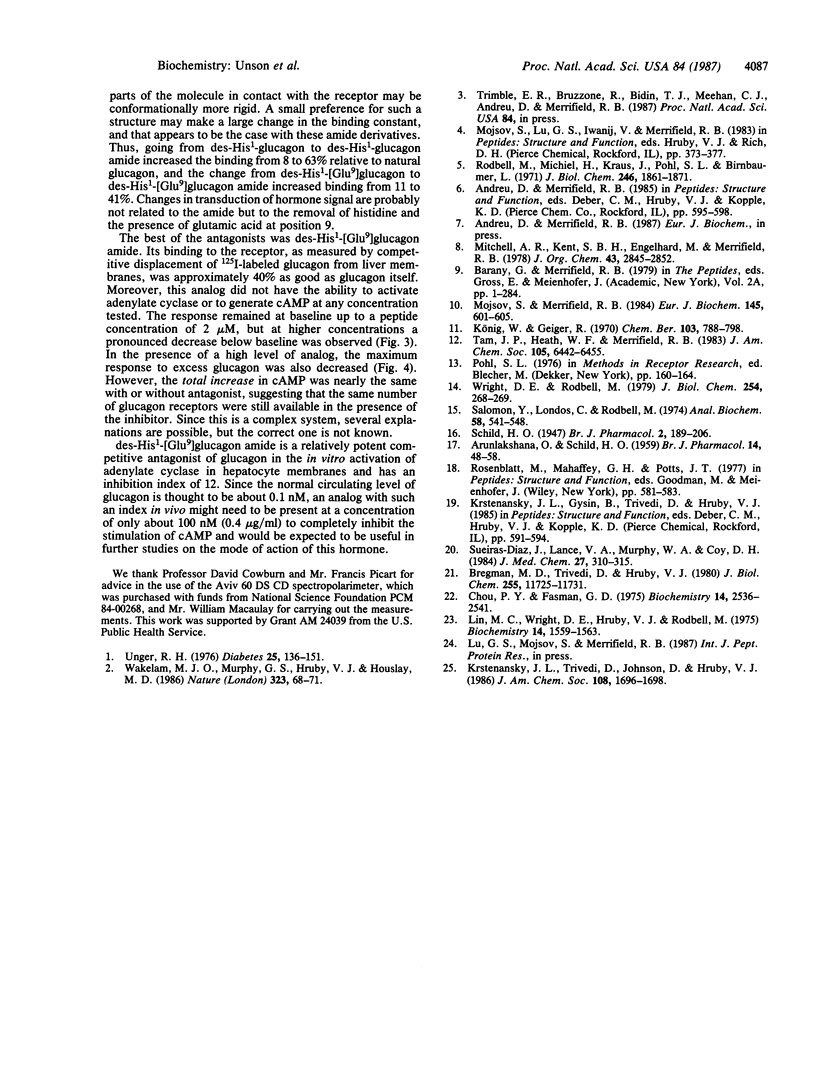Abstract
Several glucagon analogs were synthesized in an effort to find derivatives that would bind with high affinity to the glucagon receptor of rat liver membranes but would not activate membrane-bound adenylate cyclase and, therefore, would serve as antagonists of the hormone. Measurements on a series of glucagon/secretin hybrids indicated that replacement of Asp9 in glucagon by Glu9, found in secretin, was the important sequence difference in the N terminus of the two hormones. Further deletion of His1 and introduction of a C-terminal amide resulted in des-His1-[Glu9]glucagon amide, which had a 40% binding affinity relative to that of native glucagon but caused no detectable adenylate cyclase activation in the rat liver membrane. This antagonist completely inhibited the effect of a concentration of glucagon that alone gave a full agonist response. It had an inhibition index of 12. The pA2 was 7.2. An attempt was made to relate conformation with receptor binding. The peptides were synthesized by solid-phase methods and purified to homogeneity by reverse-phase high-performance liquid chromatography on C18-silica columns.
Full text
PDF




Selected References
These references are in PubMed. This may not be the complete list of references from this article.
- ARUNLAKSHANA O., SCHILD H. O. Some quantitative uses of drug antagonists. Br J Pharmacol Chemother. 1959 Mar;14(1):48–58. doi: 10.1111/j.1476-5381.1959.tb00928.x. [DOI] [PMC free article] [PubMed] [Google Scholar]
- Bregman M. D., Trivedi D., Hruby V. J. Glucagon amino groups. Evaluation of modifications leading to antagonism and agonism. J Biol Chem. 1980 Dec 25;255(24):11725–11731. [PubMed] [Google Scholar]
- Chou P. Y., Fasman G. D. The conformation of glucagon: predictions and consequences. Biochemistry. 1975 Jun 3;14(11):2536–2541. doi: 10.1021/bi00682a037. [DOI] [PubMed] [Google Scholar]
- König W., Geiger R. Eine neue Methode zur Synthese von Peptiden: Aktivierung der Carboxylgruppe mit Dicyclohexycarbodiimid unter Zusatz von 1-Hydroxy-benzotriazolen. Chem Ber. 1970;103(3):788–798. doi: 10.1002/cber.19701030319. [DOI] [PubMed] [Google Scholar]
- Lin M. C., Wright D. E., Hruby V. J., Rodbell M. Structure-function relationships in glucagon: properties of highly purified des-His-1-, monoiodo-, and (des-Asn-28, Thr-29)(homoserine lactone-27)-glucagon. Biochemistry. 1975 Apr 22;14(8):1559–1563. doi: 10.1021/bi00679a002. [DOI] [PubMed] [Google Scholar]
- Mojsov S., Merrifield R. B. An improved synthesis of crystalline mammalian glucagon. Eur J Biochem. 1984 Dec 17;145(3):601–605. doi: 10.1111/j.1432-1033.1984.tb08599.x. [DOI] [PubMed] [Google Scholar]
- Rodbell M., Krans H. M., Pohl S. L., Birnbaumer L. The glucagon-sensitive adenyl cyclase system in plasma membranes of rat liver. 3. Binding of glucagon: method of assay and specificity. J Biol Chem. 1971 Mar 25;246(6):1861–1871. [PubMed] [Google Scholar]
- Salomon Y., Londos C., Rodbell M. A highly sensitive adenylate cyclase assay. Anal Biochem. 1974 Apr;58(2):541–548. doi: 10.1016/0003-2697(74)90222-x. [DOI] [PubMed] [Google Scholar]
- Sueiras-Diaz J., Lance V. A., Murphy W. A., Coy D. H. Structure-activity studies on the N-terminal region of glucagon. J Med Chem. 1984 Mar;27(3):310–315. doi: 10.1021/jm00369a014. [DOI] [PubMed] [Google Scholar]
- Unger R. H. The Banting Memorial Lecture 1975. Diabetes and the alpha cell. Diabetes. 1976 Feb;25(2):136–151. doi: 10.2337/diab.25.2.136. [DOI] [PubMed] [Google Scholar]
- Wakelam M. J., Murphy G. J., Hruby V. J., Houslay M. D. Activation of two signal-transduction systems in hepatocytes by glucagon. Nature. 1986 Sep 4;323(6083):68–71. doi: 10.1038/323068a0. [DOI] [PubMed] [Google Scholar]
- Wright D. E., Rodbell M. Glucagon1-6 binds to the glucagon receptor and activates hepatic adenylate cyclase. J Biol Chem. 1979 Jan 25;254(2):268–269. [PubMed] [Google Scholar]


